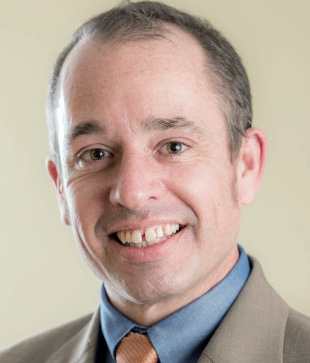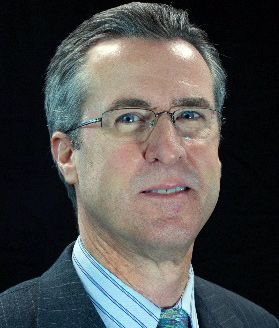Paul Hackley

Education: B.A. Geoenvironmental Studies, Shippensburg State University (1995), M.S. Geology, George Washington University (1999), Ph.D. Chemistry & Biochemistry, George Mason University (2017)
Thesis: Using hydrous pyrolysis, organic petrography and micro-spectrometry to understand solid bitumen and kerogen evolution in the early oil window
Work Experience: 2002-present: Research geologist with the U.S. Geological Survey. His primary research involves the application of organic petrology to reducing uncertainty in assessment of fossil fuel resources. Paul’s experience includes international work on coal deposits and source rocks, and Gulf Coast basin energy resource studies including coalbed methane, coal resources, conventional oil and gas, and shale petroleum systems. He manages the USGS Organic Petrology Laboratory.
Publications and Society Memberships: Paul has contributed to 40+ indexed journal articles and 100+ technical presentation abstracts, primarily on the topics of organic petrology and thermal maturity.
He is Chair of ASTM subcommittee D05.28 for the petrography of coal and coke, Chair of ICCP Commission II Geological Applications of Organic Petrology, previous TSOP Secretary (2006) and current TSOP Vice-President Elect, and holds memberships in the American Association of Petroleum Geologists (Vice-President, Energy Minerals Division 2015-2016), Geological Society of America, and the Society for Sedimentary Geology.
Paul received TSOP’s Distinguished Service Award in 2013 and was a co-recipient of the TSOP Ralph Gray Award in the same year.
Brian Cardott

Education: B.S. Geology, University of Illinois-Urbana (1977), M.S. Geology (Coal Petrology), Southern Illinois University-Carbondale (1981)
Thesis: A comparative study on the occurrence and distribution of fluorescent macerals in coals from three major coal basins of the United States (Appalachian, Illinois, and San Juan Basins)
Work Experience: 1977-1978 Coal chemist, Illinois State Geological Survey: Proximate analysis (moisture, ash, volatile matter, fixed carbon by difference); partial Ultimate analysis (carbon, hydrogen, total sulfur); sulfur forms (Eschka method); free swelling index; Gieseler plastometer.
1978-1981 Assistant manager of Coal Characterization Laboratory (Southern Illinois University-Carbondale) with Jack Crelling.
1981-present: Organic petrologist/coal geologist with the Oklahoma Geological Survey. His primary research involves coalbed methane, gas shales, tight oil, and the petrologic characterization of coals, hydrocarbon source rocks, and solid hydrocarbons of Oklahoma.
Publications and Society Memberships: Brian has written more than 60 articles and books on coal, coalbed methane, gas shales, tight oil, unconventional energy resources, hydrocarbon source rocks, solid hydrocarbons, organic weathering, graptolite reflectance, and SEM of shale/coal.
Brian is a member of The Society for Organic Petrology (serving as President, 1995-1996), International Committee for Coal and Organic Petrology (Full Member), American Association of Petroleum Geologists (serving as President of the Energy Minerals Division, 2004-2005), Geological Society of America, Oklahoma City Geological Society, and Tulsa Geological Society.